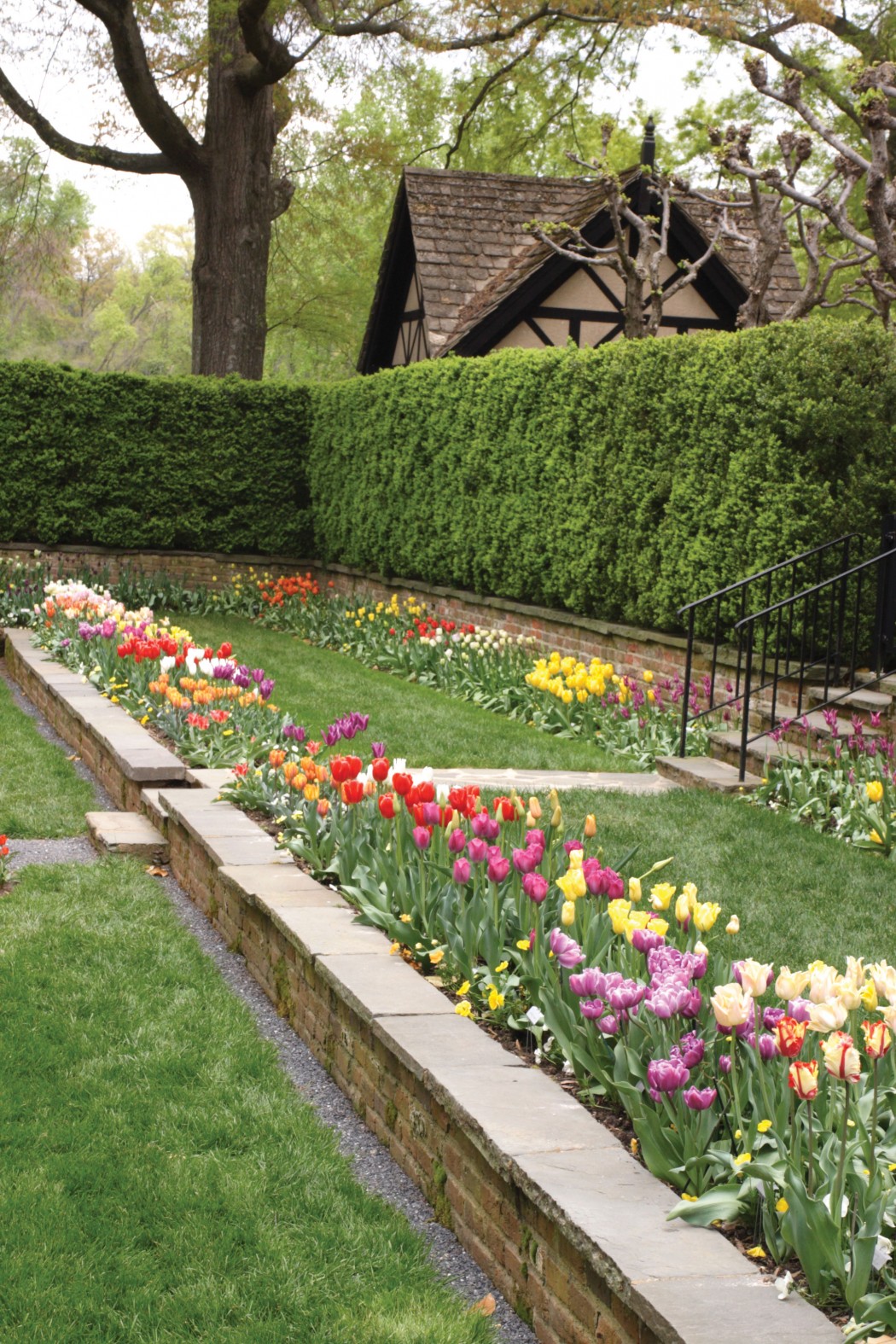Looking for a new year project that will do wonders for your landscape when the growing season shifts into high gear this spring? Take your garden to new heights, literally, by building one or more raised beds.
Raised beds turn low-lying areas into productive garden spaces that can be especially useful for growing annuals, bulbous plants and herbaceous perennials, most of which will drown and rot in areas that become pools after every rain storm.
Gardening above ground is also a way of getting around dealing with stubborn clay soils. It can take years of hard work, compost, compost and more compost to properly develop a garden site in clay, or it can be done in a weekend with the creation of a raised bed.
In essence, a raised bed is simply a mound of dirt. However, to prevent erosion and make it look more like a landscape accent and less like it just fell off a dump truck, it should be enclosed. The materials you use to do this depend on how you want the structure to blend in with its surroundings.
Treated wood is often used to contain a raised bed, but for more durability — and a better look — consider brick or stone, either mortared or dry-stacked. Brick has a more formal look that works well close to a house, while stone blends in nicely with natural aspects of a landscape.
Do note a few precautions before designing a raised bed. First, don’t give “bunker mentality” a new meaning by building four- or five-foot-high walled citadels to hold beds. Such imposing structures not only look more like forts than flower beds, but they also can be dangerous if they aren’t properly constructed. If the height of the retaining wall is going to exceed one or two feet, consider terracing the site with two, three or more raised beds. This is a safer option, and it will also open up the design to provide opportunity for cascading plants and climbing vines to interact with other terrace levels.
In addition, if you are going to construct such a project close to trees or large shrubs, be ready to deal with feeder roots. These hairlike roots always follow the path of least resistance — such as the fluffy, loose dirt found in a raised bed. Fine mesh screening and a two- to three-inch layer of landscape rocks placed at the bottom of the bed before dirt is added will help deflect these roots. This addition will also stop tunneling rodents. If the bed is going to be used to grow mainly annuals, a yearly rototilling will discourage any unwanted underground growth — and critters — from creeping into the bed as well.
Building a raised bed on ground that has been used as a garden before? You are ahead of the game. You only have to give the existing soil in the enclosure a quick turn-over, build the enclosure, add some extra dirt, and it is ready to go. This extra dirt can be either the good stuff from other parts of the garden, purchased topsoil (make sure it has been screened), compost, PermaTill (a porous pea gravel) or, for better results, a merry mix of any of these ingredients.
If the raised bed is to be placed on ground that is hard enough to tap dance on, it should be loosened up. In a raised bed, this existing topsoil will become the subsoil, but that doesn’t mean you can get out of digging it up. It needs to be broken apart in order to help with aeration and water drainage. If a shovel bounces off the brick-hard ground, just roughly beat it up with a pick to a depth of about 8 to 10 inches, removing rocks, weed clumps and debris as you go.
After shoveling in good dirt — and before adding plants — one final feature you might want to consider is an irrigation system. Because it drains readily, a raised bed is a blessing during monsoon seasons, but for the same reason, this high-rise growing ground requires more attention when the rains don’t come, especially if it is in a sunny location. However, mulches will help to retain moisture and thus cut down on the need to water so frequently.
Building a raised garden is simple, but by combining a creative design with fine-tuned construction details, it can be a low-maintenance, highly visible improvement to any landscape.
L.A. Jackson is the former editor of Carolina Gardener magazine. If you would like to ask him a question about your garden, go to his website at southeastgardening.com.







